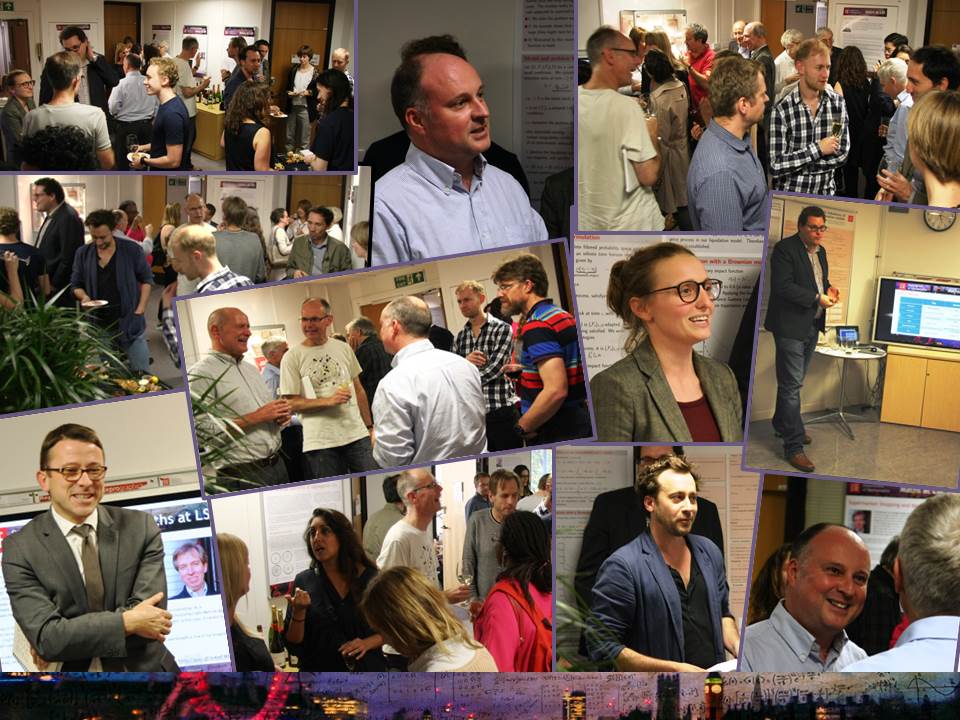 Norman Biggs is Emeritus Professor of Mathematics at LSE. He is the author of 13 books and over 100 papers on Mathematics, and has also published in the fields of Numismatics and Metrology. His latest book, “Quite Right: The Story of Mathematics, Measurement, and Money” was released in February 2016. Follow him on Twitter: @norman_biggs.
Norman Biggs is Emeritus Professor of Mathematics at LSE. He is the author of 13 books and over 100 papers on Mathematics, and has also published in the fields of Numismatics and Metrology. His latest book, “Quite Right: The Story of Mathematics, Measurement, and Money” was released in February 2016. Follow him on Twitter: @norman_biggs.
Additional course commentry is generously provided by Michael Seal (London School of Economics, Department of Mathematics, BSc Mathematics with Economics, Class of 2016).
Although this is a personal account, the success of the course is the result of the efforts of many people, and I must begin by thanking all of them for their contributions.
By about 2010 the fledgling Mathematics Department at the LSE had grown to the point where it could be compared with long-established departments in other UK universities. In particular, the new degree in Mathematics with Economics provided the opportunity to give our students a broad background in mathematics. I had dabbled in the History of Mathematics for many years and, when I mentioned the possibility of a course in that subject, I was encouraged by the then Head of Department, Jan van den Heuvel. One of my qualifications was that I had some experience of the famous OU (Open University) course, having served as an External Examiner for several years.
So there emerged a plan to set up a course of about twenty lectures and ten classes, covering the main events in the history of mathematics from the dawn of civilisation to the present day. In order to give the course a distinctive flavour, the applications of mathematics in economics and finance would be stressed. Also, the course would reflect the recent trend towards a broad view of mathematics in all its forms, rather than the traditional approach based on ‘famous mathematicians and their theorems’. The teaching would be based on the OU model, using mainly ‘gobbets’ taken from historical sources. In the coursework and the examination, students would be expected to comment on content, context, and historical significance of these gobbets. There would also be an assessed coursework essay, counting for 30% of the final mark. It was hoped that the students would thereby acquire the skill of writing about technical mathematics in narrative form. For more information on the course, current students can visit this Moodle page.
 At an early stage I was lucky enough to involve Robin Wilson, an old friend and co-author, who also had experience of the OU system. Like me, he was officially ‘retired’, and was able to bring much-needed expertise and enthusiasm to the project. After some preparatory work we were able to satisfy the LSE’s regulations, and the course MA318 History of Mathematics in Finance and Economics was offered for the first time in the academic year 2012-13. There were six students, and contributions from four teachers. The course materials were produced in rather crude way but, by and large, the course went well. Nevertheless, there were obvious lessons to be learned, and in order to make the course more coherent, all the lectures and the classes in 2013-14 were done by Robin and myself. Another innovation was to encourage active involvement of the students in the classes, which we did by using quizzes. These comprised short questions in which students were asked to answer simple problems using the techniques available in the relevant historical period.
At an early stage I was lucky enough to involve Robin Wilson, an old friend and co-author, who also had experience of the OU system. Like me, he was officially ‘retired’, and was able to bring much-needed expertise and enthusiasm to the project. After some preparatory work we were able to satisfy the LSE’s regulations, and the course MA318 History of Mathematics in Finance and Economics was offered for the first time in the academic year 2012-13. There were six students, and contributions from four teachers. The course materials were produced in rather crude way but, by and large, the course went well. Nevertheless, there were obvious lessons to be learned, and in order to make the course more coherent, all the lectures and the classes in 2013-14 were done by Robin and myself. Another innovation was to encourage active involvement of the students in the classes, which we did by using quizzes. These comprised short questions in which students were asked to answer simple problems using the techniques available in the relevant historical period.
 The number of students taking the course increased steadily. We were attracting students from several degree programmes, including Actuarial Science, Business Mathematics and Statistics, and the General Course (the LSE name for overseas students who spend one year here), as well as Mathematics with Economics. This meant that we needed some additional help with the teaching, and we were lucky enough to recruit June Barrow-Green, one of the UK’s leading historians of mathematics. It was also time to make the course materials more attractive, by collecting them in five illustrated booklets which were distributed to registered students in advance. The covers of two of these booklets are shown below. Some additional materials are made available on Moodle.
The number of students taking the course increased steadily. We were attracting students from several degree programmes, including Actuarial Science, Business Mathematics and Statistics, and the General Course (the LSE name for overseas students who spend one year here), as well as Mathematics with Economics. This meant that we needed some additional help with the teaching, and we were lucky enough to recruit June Barrow-Green, one of the UK’s leading historians of mathematics. It was also time to make the course materials more attractive, by collecting them in five illustrated booklets which were distributed to registered students in advance. The covers of two of these booklets are shown below. Some additional materials are made available on Moodle.
We were aware that the British Society for the History of Mathematics offered annual prizes for essays written by undergraduates at a UK university, and in 2015-16 we encouraged students to submit their MA318 essays for this prize. It was gratifying that one prize was awarded to Michael Seal, one of our Mathematics with Economics students, for his essay entitled ‘Was there a revolution in analysis in the nineteenth century’. Clearly the course is in good shape, and we are looking forward to teaching it again next year.
 MA318 offers mathematics students the rare opportunity to write a marked piece of work. Last year, one student submitted their essay to The British Society for the History of Mathematics (BSHM) Undergraduate Essay Prize, awarded annually for an essay by an undergraduate student on any topic in the history of mathematics. One of 2016’s two prizes was awarded to Michael Seal (London School of Economics, Department of Mathematics, BSc Mathematics with Economics) for his essay entitled “Was there a Revolution in Analysis in the Early 19th Century?”
MA318 offers mathematics students the rare opportunity to write a marked piece of work. Last year, one student submitted their essay to The British Society for the History of Mathematics (BSHM) Undergraduate Essay Prize, awarded annually for an essay by an undergraduate student on any topic in the history of mathematics. One of 2016’s two prizes was awarded to Michael Seal (London School of Economics, Department of Mathematics, BSc Mathematics with Economics) for his essay entitled “Was there a Revolution in Analysis in the Early 19th Century?”
We spoke to Michael about his success and he had this to say about his time at LSE and how it now influences his role a secondary school maths teacher:
“The first thing I should say is what a pleasant surprise it was to be awarded the prize! It is lovely to have my work recognised, and exciting to be able to engage further with those at the BSHM – I think the essay prize is a great opportunity, and I’m very grateful to the BSHM for presenting me with it!
The essay itself asked whether there was a revolution in Analysis in the early 19th century, which is interesting because of the breakthroughs in Calculus that preceded the period, and the ensuing interplay between the march of mathematics and science, and the political and religious institutions of the time. My argument was 3-pronged and concluded that there was a revolution in Analysis at that time. I concluded that it had 3 defining characteristics: the paradigm shift in the collective attitude towards rigour at the beginning of the 19th century, which motivated a huge increase in the organisation of, and research into, the concepts of Analysis, which in turn has had an unprecedented impact on our current understanding of the subject.
Finally I wanted to say how much I enjoyed the course! It was delivered enthusiastically and engagingly, and was a highlight of my final year! My time at LSE was marked by great people and experiences throughout, in particular, it was of course dominated by a series of fascinating (and deeply challenging!) maths courses. What I realised during the MA318 course, and have come to appreciate even more deeply in retrospect, is what really grabs me about the History of Maths: that it ties together the different areas of the subject into a cohesive big picture. Not only that, but it provides a spectacularly detailed narrative for that how that ‘big picture’ emerged.
I am now teaching Maths full-time at a secondary school in South London, and my lessons are packed with historical context: stories of where the Maths came from, and how it ties in with everything the period – from the body of academic knowledge at the time, to the social and political situation! I am grateful to Professors Biggs, Wilson, and Barrow-Green for an inspiring and informative experience, that has enriched my own teaching, and has opened me to an entirely new dimension of our subject!”






